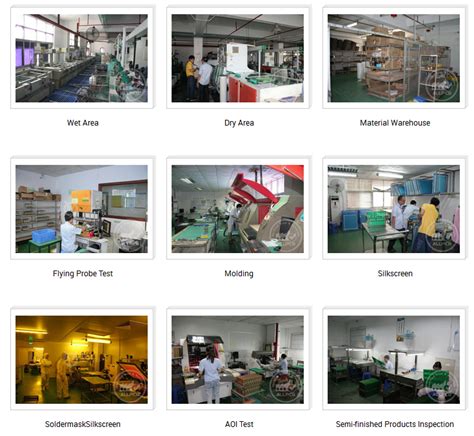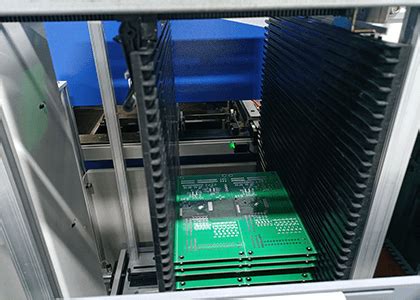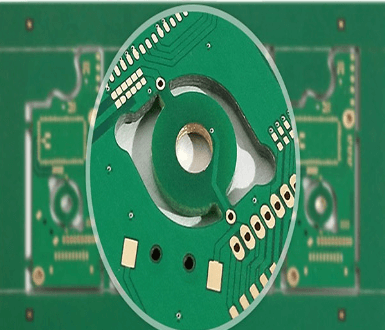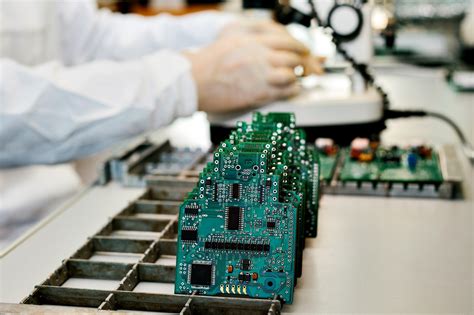Metal core pcb thickness
Importance Of Metal Core PCB Thickness In Thermal Management
The importance of metal core PCB thickness in thermal management cannot be overstated, particularly in applications where efficient heat dissipation is crucial. Metal core printed circuit boards (MCPCBs) are designed to provide superior thermal conductivity compared to traditional FR4 PCBs, making them indispensable in high-power and high-temperature environments. The thickness of the metal core plays a pivotal role in determining the thermal performance of these PCBs, influencing not only the heat dissipation capabilities but also the mechanical stability and overall reliability of the electronic device.
To begin with, the primary function of the metal core in a PCB is to act as a heat sink, drawing heat away from critical components and dissipating it efficiently.
The thickness of the metal core directly impacts its ability to conduct heat. A thicker metal core generally offers better thermal conductivity, allowing for more effective heat transfer from the heat-generating components to the surrounding environment. This is particularly important in applications such as LED lighting, power electronics, and automotive systems, where excessive heat can lead to performance degradation or even failure of the electronic components.
Moreover, the choice of metal for the core, typically aluminum or copper, also affects the thermal management capabilities.
Aluminum is often preferred for its balance of thermal conductivity, weight, and cost, while copper, though more expensive and heavier, provides superior thermal performance. The thickness of the metal core must be carefully selected based on the specific thermal requirements of the application. For instance, in high-power LED applications, a thicker aluminum core may be necessary to ensure adequate heat dissipation and maintain the longevity and efficiency of the LEDs.
In addition to thermal management, the thickness of the metal core also influences the mechanical properties of the PCB.
A thicker metal core can enhance the structural integrity of the PCB, making it more resistant to bending and mechanical stress. This is particularly beneficial in applications where the PCB may be subjected to harsh environmental conditions or mechanical vibrations. However, it is essential to strike a balance, as an excessively thick metal core can increase the overall weight and cost of the PCB, potentially making it less suitable for certain applications.
Furthermore, the thickness of the metal core can affect the electrical performance of the PCB.
While the primary focus is on thermal management, it is important to consider the potential impact on signal integrity and electromagnetic interference (EMI). A thicker metal core can provide better shielding against EMI, which is crucial in high-frequency applications. However, designers must ensure that the increased thickness does not adversely affect the electrical pathways and overall functionality of the PCB.
In conclusion, the thickness of the metal core in a PCB is a critical factor in thermal management, influencing not only the heat dissipation capabilities but also the mechanical stability and electrical performance of the device. Selecting the appropriate thickness requires a careful consideration of the specific thermal, mechanical, and electrical requirements of the application. By optimizing the metal core thickness, designers can enhance the reliability and efficiency of electronic devices, ensuring they operate effectively even in demanding environments. As technology continues to advance, the role of metal core PCBs in thermal management will undoubtedly become even more significant, underscoring the need for precise and informed decisions regarding their design and implementation.
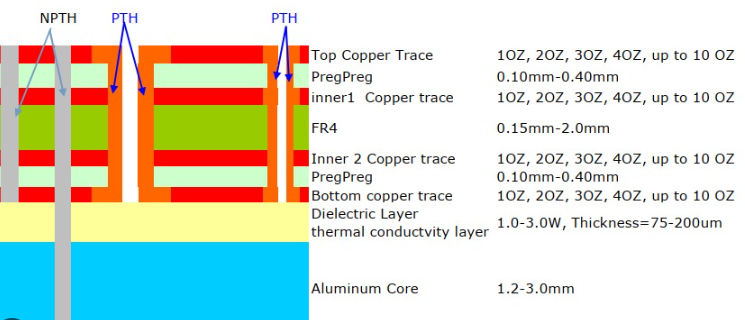
How To Choose The Right Metal Core PCB Thickness For Your Application
When selecting the appropriate metal core PCB (Printed Circuit Board) thickness for your application, it is crucial to consider several factors that influence the performance, durability, and overall efficiency of the final product. Metal core PCBs are widely used in applications requiring superior heat dissipation, such as LED lighting, power supplies, and automotive electronics. The thickness of the metal core plays a pivotal role in determining the thermal management capabilities, mechanical strength, and electrical performance of the PCB.
To begin with, understanding the thermal requirements of your application is essential.
Metal core PCBs are typically composed of a metal substrate, such as aluminum or copper, which provides excellent thermal conductivity. The thickness of this metal layer directly impacts the board’s ability to dissipate heat. For high-power applications where significant heat is generated, a thicker metal core is advantageous as it can efficiently transfer heat away from critical components, thereby preventing overheating and ensuring reliable operation. Conversely, for low-power applications, a thinner metal core may suffice, offering adequate thermal management without unnecessary bulk.
In addition to thermal considerations, the mechanical strength of the PCB is another critical factor influenced by the metal core thickness.
A thicker metal core enhances the rigidity and structural integrity of the PCB, making it more resistant to bending, warping, and mechanical stress. This is particularly important in applications subjected to harsh environmental conditions or mechanical vibrations, such as automotive or industrial electronics. However, it is important to balance the need for mechanical strength with the overall weight and size constraints of the final product. Excessive thickness can lead to increased weight and may pose challenges in terms of space utilization and assembly.
Furthermore, the electrical performance of the PCB is also affected by the thickness of the metal core.
Thicker metal cores can provide lower electrical resistance, which is beneficial for high-current applications. This results in reduced power losses and improved efficiency. However, it is essential to consider the trade-offs between electrical performance and other factors such as cost and manufacturability. Thicker metal cores can be more expensive and may require specialized manufacturing processes, which can impact the overall cost and lead time of the project.
Another important consideration is the compatibility of the metal core thickness with the overall PCB stack-up.
The stack-up refers to the arrangement of various layers within the PCB, including the metal core, dielectric layers, and copper traces. The thickness of the metal core should be carefully chosen to ensure proper alignment and bonding with other layers, as well as to maintain the desired impedance characteristics. It is advisable to consult with PCB manufacturers and designers to determine the optimal stack-up configuration for your specific application.
Moreover, it is essential to consider the thermal expansion properties of the metal core material.
Different metals have varying coefficients of thermal expansion, which can affect the overall reliability and performance of the PCB. Mismatched thermal expansion between the metal core and other layers can lead to delamination, cracking, or other forms of mechanical failure. Therefore, selecting a metal core material with compatible thermal expansion properties is crucial to ensure long-term reliability.
In conclusion, choosing the right metal core PCB thickness for your application requires a comprehensive understanding of the thermal, mechanical, and electrical requirements. By carefully considering factors such as thermal management, mechanical strength, electrical performance, stack-up compatibility, and thermal expansion properties, you can make an informed decision that optimizes the performance and reliability of your PCB. Consulting with experienced PCB manufacturers and designers can further assist in selecting the most suitable metal core thickness for your specific needs, ensuring a successful and efficient final product.
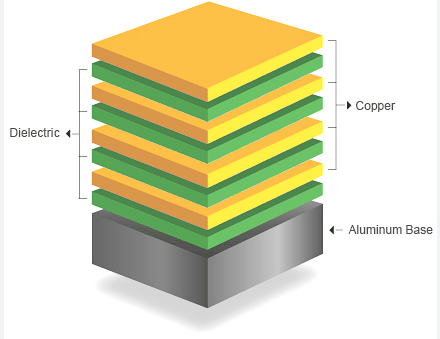
Comparing Different Metal Core PCB Thicknesses For Performance Optimization
When it comes to optimizing the performance of metal core printed circuit boards (MCPCBs), one of the most critical factors to consider is the thickness of the metal core. MCPCBs are widely used in applications that require efficient heat dissipation, such as LED lighting, power electronics, and automotive systems. The thickness of the metal core can significantly influence the thermal management, mechanical stability, and overall performance of the PCB. Therefore, understanding the implications of different metal core thicknesses is essential for making informed design decisions.
To begin with, the primary function of the metal core in an MCPCB is to act as a heat sink, dissipating heat away from critical components.
Thicker metal cores generally offer better thermal conductivity, which can be advantageous in high-power applications where heat dissipation is paramount. For instance, a thicker aluminum core can effectively reduce the thermal resistance, thereby enhancing the thermal performance of the PCB. This is particularly beneficial in LED applications, where maintaining a lower junction temperature can significantly extend the lifespan of the LEDs.
However, while thicker metal cores provide superior thermal management, they also come with certain trade-offs.
One of the main drawbacks is the increased weight and bulkiness of the PCB. This can be a critical consideration in applications where space and weight are constrained, such as in portable electronic devices or aerospace systems. Additionally, thicker metal cores can complicate the manufacturing process, leading to higher production costs and longer lead times. Therefore, it is essential to strike a balance between thermal performance and practical constraints when selecting the appropriate metal core thickness.
Moreover, the mechanical properties of the PCB are also influenced by the thickness of the metal core.
Thicker cores tend to offer greater mechanical stability and rigidity, which can be beneficial in environments subject to mechanical stress or vibration. This added robustness can help prevent issues such as warping or bending, thereby ensuring the reliability and longevity of the PCB. On the other hand, thinner metal cores may be more flexible, which can be advantageous in applications requiring a certain degree of pliability or in designs where the PCB needs to conform to a specific shape.
In addition to thermal and mechanical considerations, the electrical performance of the PCB can also be affected by the thickness of the metal core.
Thicker cores can introduce additional parasitic capacitance and inductance, which may impact the signal integrity and overall electrical performance of the circuit. This is particularly relevant in high-frequency applications, where maintaining signal integrity is crucial. Therefore, careful consideration must be given to the electrical requirements of the application when selecting the metal core thickness.
Furthermore, it is important to consider the type of metal used for the core, as different metals have varying thermal and mechanical properties. Aluminum and copper are the most commonly used metals for MCPCBs, each offering distinct advantages. Aluminum is lightweight and cost-effective, making it suitable for a wide range of applications. Copper, on the other hand, offers superior thermal conductivity and electrical performance but is heavier and more expensive. The choice of metal, combined with the appropriate thickness, can significantly influence the overall performance of the PCB.
In conclusion, optimizing the performance of metal core PCBs requires a careful evaluation of the thickness of the metal core. While thicker cores offer enhanced thermal management and mechanical stability, they also come with trade-offs such as increased weight and potential impacts on electrical performance. By considering the specific requirements of the application and balancing these factors, designers can select the most suitable metal core thickness to achieve optimal performance.
Impact Of Metal Core PCB Thickness On Electrical Conductivity And Reliability
The impact of metal core PCB thickness on electrical conductivity and reliability is a critical consideration in the design and manufacturing of printed circuit boards. Metal core PCBs, often utilized in high-power and high-heat applications, offer distinct advantages over traditional PCBs due to their enhanced thermal management capabilities. The thickness of the metal core, typically composed of aluminum or copper, plays a pivotal role in determining the overall performance and durability of the PCB.
To begin with, the thickness of the metal core directly influences the electrical conductivity of the PCB.
A thicker metal core generally provides lower electrical resistance, which is beneficial for high-current applications. This is because the increased cross-sectional area allows for more efficient current flow, reducing the potential for overheating and energy loss. Consequently, devices that require substantial power, such as LED lighting systems and power converters, benefit significantly from PCBs with thicker metal cores. The improved conductivity ensures that these devices operate efficiently, maintaining optimal performance levels.
Moreover, the thermal conductivity of the PCB is also affected by the thickness of the metal core.
Thicker metal cores enhance the PCB’s ability to dissipate heat, which is crucial for maintaining the reliability and longevity of electronic components.
Effective heat dissipation prevents the components from reaching critical temperatures that could lead to thermal degradation or failure. This is particularly important in applications where high power densities are involved, as excessive heat can compromise the integrity of the PCB and the components mounted on it. By utilizing a thicker metal core, manufacturers can ensure that the heat generated during operation is efficiently conducted away from sensitive components, thereby enhancing the overall reliability of the device.
In addition to electrical and thermal conductivity, the mechanical stability of the PCB is also influenced by the thickness of the metal core.
A thicker core provides greater structural support, reducing the likelihood of warping or bending under mechanical stress. This is especially relevant in environments where the PCB may be subjected to physical shocks or vibrations. The enhanced mechanical stability ensures that the PCB maintains its integrity, thereby preventing potential damage to the electrical connections and components. Consequently, devices that operate in harsh or demanding conditions benefit from the robustness provided by a thicker metal core.
However, it is important to note that while thicker metal cores offer numerous advantages, they also present certain challenges.
For instance, the increased thickness can complicate the manufacturing process, requiring specialized equipment and techniques to ensure precise fabrication. Additionally, thicker metal cores can add to the overall weight of the PCB, which may be a consideration in applications where weight is a critical factor. Therefore, designers must carefully balance the benefits of increased thickness with the potential drawbacks, taking into account the specific requirements of the application.
In conclusion, the thickness of the metal core in PCBs has a profound impact on electrical conductivity and reliability. Thicker metal cores enhance electrical and thermal conductivity, providing efficient current flow and effective heat dissipation. They also contribute to the mechanical stability of the PCB, ensuring durability in demanding environments. However, the challenges associated with increased thickness must be carefully managed to optimize the performance and reliability of the final product. By understanding and addressing these factors, manufacturers can leverage the advantages of metal core PCBs to develop high-performance, reliable electronic devices.

